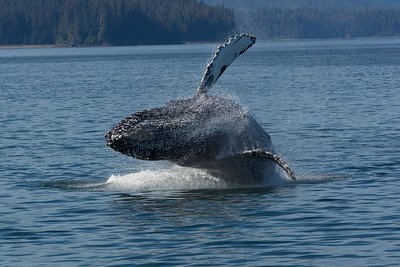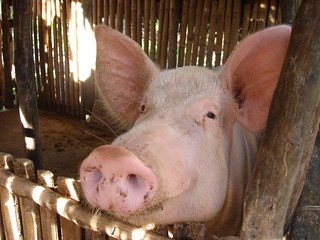What Animals Teach Us About Positioning
by Ellie Victor
On the 25th of October, ZOOM Marketing, Sweet Farm and the Palo Alto Humane hosted another event in the highly successful Humane Planet Speaker Series. Our speaker was Professor Martha Nussbaum, the Aristotle of our generation.
While Prof. Nussbaum shared her insights on animal rights, ethics, and the law, I couldn’t help but see the parallels between her philosophy and our own work in brand positioning. Her pioneering efforts in shaping a new theory in animal rights serves as a blueprint for creating and leading a new category.
Prof. Nussbaum masterfully blends four principles of brand positioning that we’ve also applied to clients like Snowflake, ThoughtSpot, Nutanix and Databricks:
Define a new category.
Be a disruptor.
Chart a course to the future.
Be a storyteller.
1. Define a New Category
Ms. Nussbaum’s invention of the “Capabilities Approach” is on par with Snowflake defining the “data cloud” or Databricks defining the “Lakehouse.” Like in B2B tech, the “Capabilities Approach” category seeks to define a new approach to solve a serious problem. In simple terms, the Capability Approach suggests that all sentient beings should have the opportunity to lead flourishing lives in accordance with the characteristic capabilities of their species.
What if we reframed animal rights to consider the unique capabilities and forms of life of each species? The ultimate goal is for each species to have the opportunity to live in a manner aligned with its inherent dignity and to achieve a reasonable threshold level of well-being. Ideally, this approach involves creating species-specific lists of what matters most to each creature for survival and flourishing, based on their expressed concerns and preferences. In terms of animal rights, this means:
Having respect for all forms of life, not just those that resemble humans.
Having comprehensive consideration of the entire well-being of animals.
Acknowledgment of animals as active agents with intelligence, aspirations, and expressions of preference.
When we decide to tackle the issue of animal rights from that position, our perspective changes. It forces us to look through a different lens and address problems—like poaching, factory farming, pollution—using a framework from the “target audience’s” perspective.
2. Be a Disruptor
Like many successful disruptors, Prof. Nussbaum approached her objective as an outsider. Globally acknowledged as one of the leading philosophers of our time, the animal rights movement did not see her coming. She boldly blends science, story, history, and her globally acknowledged proficiency in philosophy and law to make her case.
Prof. Nussbaum calls out the different approaches that have been taken when it comes to animal welfare, and why they are flawed, just like disruptive technology calls out what’s wrong with competitive approaches.
Calling Out Competitors
The “So-Like-Us Approach” is grounded in the belief that animals closely resembling humans, especially in terms of intelligence, such as great apes and elephants, should be considered legal persons and granted certain protections. However, it fails to address the suffering of animals that do not resemble humans and lacks real curiosity in exploring the diverse forms of intelligence and cognitive complexity present in the animal kingdom.
Then there is the “Utilitarian Approach,” rooted in the idea that the only good thing is pleasure, and the only bad thing is pain. This narrows the focus to pain and overlooks other aspects of an animal's well-being, such as the freedom to move, play, choose their paths and enjoy social relationships.
Adopting the Capabilities Approach means adopting a unique and holistic perspective and asking questions from a different angle. Just like AI’s impact has rippled across various business sectors, by changing how tasks are performed and efficiency is improved, this way of thinking can change the way we think about farming, conservation and pollution.
By recognizing and respecting the distinctive forms of life and capabilities of each species, this approach has the potential to transform the way we view and protect animals.
3. Chart a Course to the Future
In positioning, we create a roadmap for the future so that customers can envision what success would look like using your approach or solution.
Prof. Nussbaum has shared her own roadmap, applying her significant understanding of law, to outline a virtual constitution. Here she envisions how the rights of animals can be structured and enforced. The first order of business is to establish standing for animals, which entitles them to take legal action. While this may sound far-fetched, it’s not unlike children, seniors or people with cognitive disabilities who enjoy rights, typically enforced through a guardian.
One of Prof. Nussbaum’s innovative ideas is that of species experts to be responsible for advocating for their species’ capabilities. Species experts would have years of experience observing species in their natural environment, such as Cynthia Moss, a renowned elephant researcher.
Prof. Nussbaum suggests we need to move to a world where more politicians advocate for animal rights without fearing career repercussions. Countries with leaders who champion animal welfare, like some in Europe and South America, have more robust animal protection laws.
We can also start thinking about what Martha calls “tragic conflicts,” the situations where, no matter what action we take, harm or wrong seem inevitable. The conflict between environmental impact, human health, and the well-being of animals is one such example. We need to ask what a world without these conflicts might look like and take that vision to the rest of the world.
4. Be a Storyteller
The story behind Justice for Animals is born out of grief and loss. Prof. Nussbaum was inspired to write the book to honor her late daughter, Rachel, who dedicated her life’s work to whales.
In Prof. Nussbaum’s opening address, she told the story of three animals and painted a picture of how their lives would be in the Capabilities Approach versus today:
Hal the humpback whale would sing throughout his long, social life rather than starve due to plastic ingestion.
Virginia the elephant would live a free, social life with her calf, rather than suffer brutal ivory poaching.
The Empress of Blandings, a Berkshire prize-winning sow, would enjoy eating freely from her trough and the adoration of her human family rather than endure solitude in a tight gestation crate in which she cannot move.
The Capabilities Approach invites us to imagine a world where animals like Hal, Virginia, and the Empress can flourish according to their intrinsic potential. By capturing the imagination of the audience, you also capture their attention and promote your goals—which is what positioning strives to do!
A Call to Action
The world is in transition. Old paradigms are shifting as we reposition the ethics of our actions and their impact on the environment, human health, and the lives of animals. Martha Nussbaum's insights remind us that finding the way forward is not a linear journey. It's a process of exploration, humility, and a commitment to doing what is right, even when the choices are complex and nuanced.
Positioning is rarely final. In companies, and in the wider world, it's a collective endeavor, a dynamic conversation that continues to evolve. Whether you are highlighting the way your tech is disrupting the status quo, or advocating for a more compassionate, sustainable, ethically conscious world, the power of positioning remains your essential tool to lead.
Is it Time to Revamp Your Positioning?
We’ve outlined the questions you may be asking, with examples of how clients found the answers in the 7 Signs It’s Time to Reposition.
Subscribe to a Humane Planet!
Events are free to the public and held online or in Silicon Valley. Please click below if you’re interested in getting involved or subscribing to our Humane Planet emails.
About Palo Alto Humane
The Palo Alto Humane is a 501(c) 3 nonprofit, charitable, volunteer-supported organization. One of the few humane societies nationwide with no animal shelter, we work to keep animals out of the shelter through humane programs in intervention, advocacy, and education. For a century, our mission has been to alleviate the suffering of animals, increase public sensitivity to animal issues, and elevate the status of animals in our society.
About Sweet Farm
Sweet Farm is the first non-profit sanctuary in the world to address the global climate impacts of factory farming across animals, plants, and the planet. Our food web is incredibly complicated and it’s impossible to move forward without first understanding how these pieces are connected. By linking climate education, veganic agriculture, farm-animal rescue, and the technology that is sustainably disrupting food and agriculture production—Sweet Farm is redefining what it means to be a sanctuary.
About ZOOM Marketing
ZOOM Marketing is Silicon Valley’s first and longest-lasting agency focused on brand positioning. Our clients gain leadership through data-driven positioning that builds and differentiates category leaders. ZOOM’s clients are the positioning leaders in their market, including Snowflake, Databricks, ThoughtSpot, FloQast and Infoblox.







